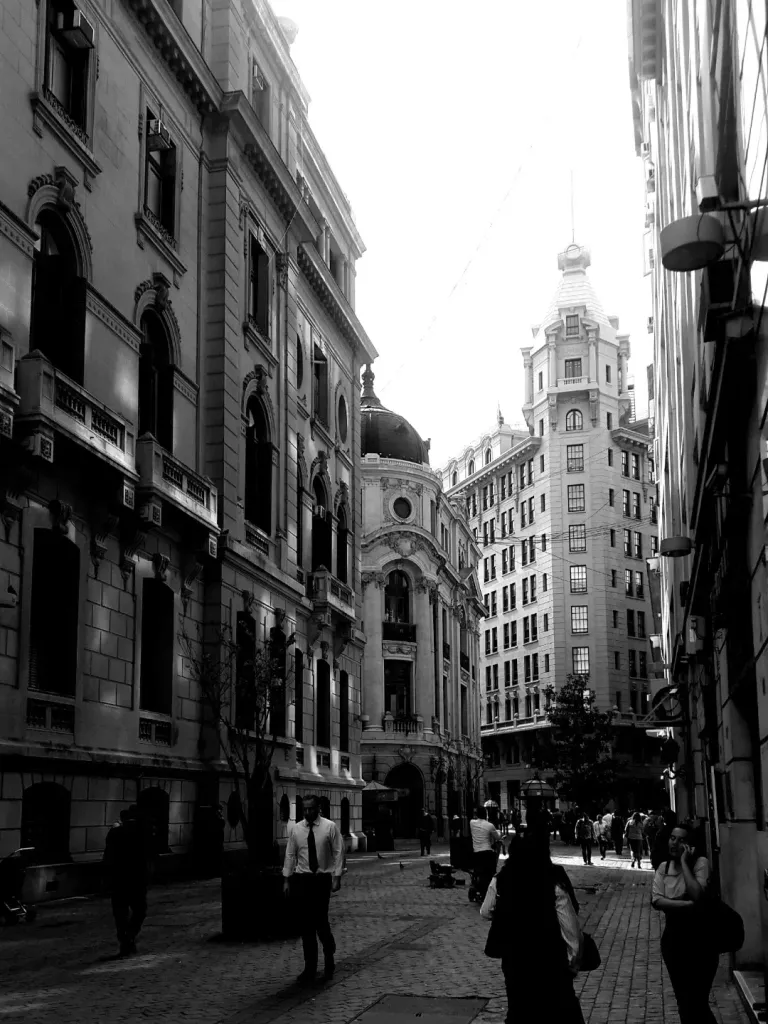The most famous street in Santiago de Chile🏰 [English-Spanish]

[English]
The history of the New York neighborhood dates back to 1912, when the Augustinian nuns, who owned the area, decided to divide their land into lots. The Augustinian church remained at the center of the subdivision, which is why the streets of the new development were laid out diagonally. The land was acquired by various institutions and economic groups, who erected elegant neoclassical buildings. The first of these was the Santiago Stock Exchange, built by architect Emilio Jéquier and inaugurated in 1917. Later, the Ariztía Palace was added, designed by Alberto Cruz Montt in 1921 and considered Santiago's first skyscraper. Later, the buildings of the La Mundial Insurance Company were added in 1923, and the Club de la Unión, also designed by Cruz Montt, in 1925. The "La Bolsa" neighborhood, as the area is popularly known, was a center for finance, social and cultural activity during the 20th century, a status it maintains to this day. In 1989, it was declared a Typical Zone due to its homogeneity, formal and stylistic unity, as well as its urban significance for the city of Santiago. References: Decree 00606 (1989) La Bolsa Neighborhood
[Spanish]
La historia del barrio de nueva york se remonta a 1912, cuando la monjas agustinas, propietarias de lugar, decidieron lotear sus terrenos. La iglesia de las agustinas se mantuvo al centro del loteo, razón por la cual, las calles de la nueva urbanización se trazaron en forma diagonal. Los terrenos fueron adquiridos por distintas instituciones y grupos económicos, que levantaron elegantes edificios en estilo neoclásico. El primero de ellos fue el de la Bolsa de Santiago, construido por el arquitecto Emilio Jéquier e inaugurado en 1917, más tarde se sumó el Palacio Ariztía, realizado por Alberto Cruz Montt en 1921 y considerado el primer rascacielos de Santiago. Posteriormente, se añadieron los edificios de la Compañía de Seguros La Mundial en 1923 y el del Club de la Unión, también realizado por Cruz Montt en 1925. El Barrio “La Bolsa”, nombre con que se conoce popularmente al sector, constituyó un centro para las finanzas, la actividad social y cultural durante el siglo XX, condición que mantiene hasta la actualidad. En 1989 fue declarado Zona Típica en virtud de su homogeneidad, unidad formal y estilística, además de su significación urbana para la ciudad de Santiago. Referencias: Decreto 00606 (1989) Barrio La Bolsa
Picture take for my person. Thanks.
For the best experience view this post on Liketu
Congratulations @destinodereyes! You have completed the following achievement on the Hive blockchain And have been rewarded with New badge(s)
Your next target is to reach 6000 upvotes.
You can view your badges on your board and compare yourself to others in the Ranking
If you no longer want to receive notifications, reply to this comment with the word
STOPNice capture